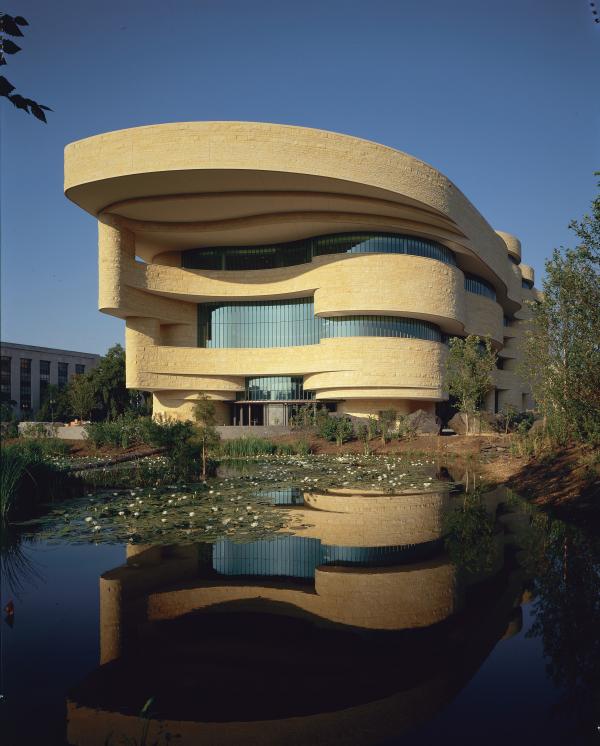KID REPORTERS’ NOTEBOOK
Understanding American Indian Culture
Grace gets ready to tour the National Museum of the American Indian in Washington, D.C.
The National Museum of the American Indian (NMAI) in Washington, D.C., offers insights into the richness and complexity of Native culture. Indigenous art in many media—pottery, cradleboards, clothing, and more—introduces visitors to the lives and traditions of Native people throughout the Western Hemisphere.
NMAI, which is part of the Smithsonian Institution, has more than 800,000 artifacts from the Arctic to Tierra del Fuego, the southernmost tip of South America.
While advancing our knowledge and understanding of American Indian cultures, the museum also partners with Native people to ensure that their sacred history is preserved.
Grace talks with NMAI education specialist Renée Gokey as a local reporter looks on.
THE DIVERSITY OF AMERICAN INDIANS
During a recent visit to the museum, I spoke with education specialist Renée Gokey. NMAI, she said, showcases American Indian traditions and art, and helps shatter stereotypes. Visitors can learn, for example, about the expertise of Native people who created complex engineering systems, suspension bridges made from woven grass, and influential treaties.
A section devoted to the Navajo Code Talkers highlights their bravery and ingenuity during World War II, which helped save lives. Visitors can also see contemporary stories, including how soldiers stationed in Iraq brought their traditional games, foods, and regalia with them and shared their heritage with fellow soldiers.
MY OWN HISTORY
There are 573 federally recognized tribes in the United States and more than 3 million Native Americans living in the U.S.
I’m a member of the Mescalero Apache tribe. I live in Maryland, while most of my Apache relatives live on our reservation in New Mexico.
I’m just a normal kid who does the same things as other kids, like soccer, art projects, and reading. I also participate in our tribal ceremonies sometimes.
Even though I don’t live on our reservation, I still like to learn about my culture. At the museum, I got to see antique playing cards, made of animal hide, that were from my tribe.
SHATTERING STEREOTYPES
Gokey said that many people have misconceptions about American Indians that are based on snapshots or stereotypical images in popular culture. “Visitors might expect to see headdresses and totem poles,” she said, “or a timeline of the few cultures they can name from having seen them on TV Westerns.”
But the museum offers a lot more, including contemporary art and modern American objects with Native symbolism or figures, including jewelry, a motorcycle, advertisements, and paintings. Even the elevators are designed with images of birds to convey flight.
NMAI also showcases the wisdom and ingenuity of American Indian cultures and how they have protected natural resources and the land for centuries.

The museum, which opened in 2004, was established by a 1989 law. The architecture and landscape emphasize Native people’s connection to the land.
CARING FOR PRECIOUS OBJECTS
The museum’s own history reflects a change in views towards American Indians. On November 28, 1989, a law established the museum, which did not open until 2004, as part of the Smithsonian. The law also required the Smithsonian to return human remains and funerary objects at the request of federally recognized Indian tribes and Native Hawaiian organizations. The sacred artifacts had been taken from Indian lands and people for centuries.
The museum’s goal is to advance the study of American Indian culture and help collect, preserve, and exhibit cultural and artistic artifacts. Native American research and study are also part of NMAI’s mandate.
According to Gokey, the museum must carefully preserve its objects and keep certain pieces out of the light to protect them. Another challenge is that artifacts with horse hair, elk hide, shell, and natural paints, for example, are susceptible to bugs, so they, too, need special care.
“We bring in Native people to help us care for these objects as living ancestors,” Gokey said. “They may even conduct ceremonies for them.”
